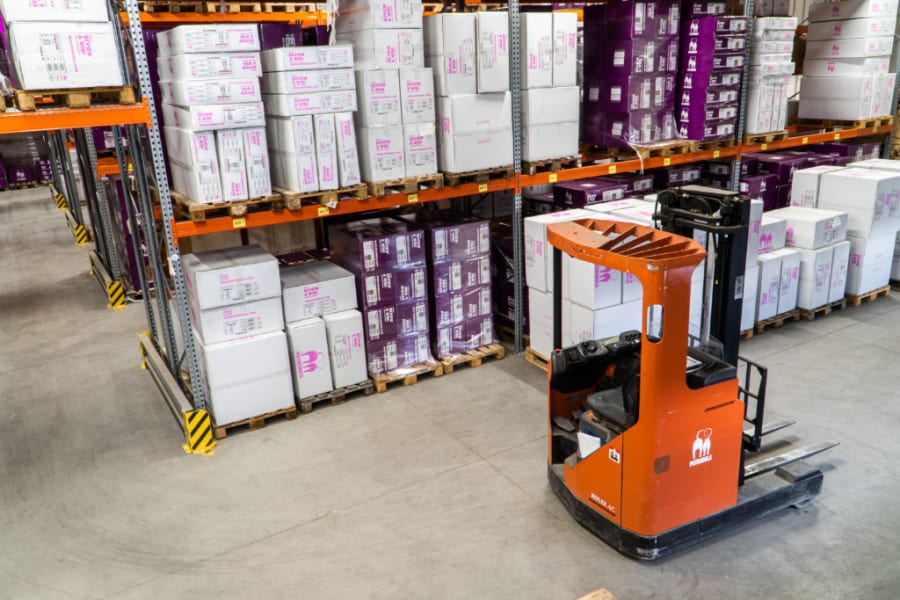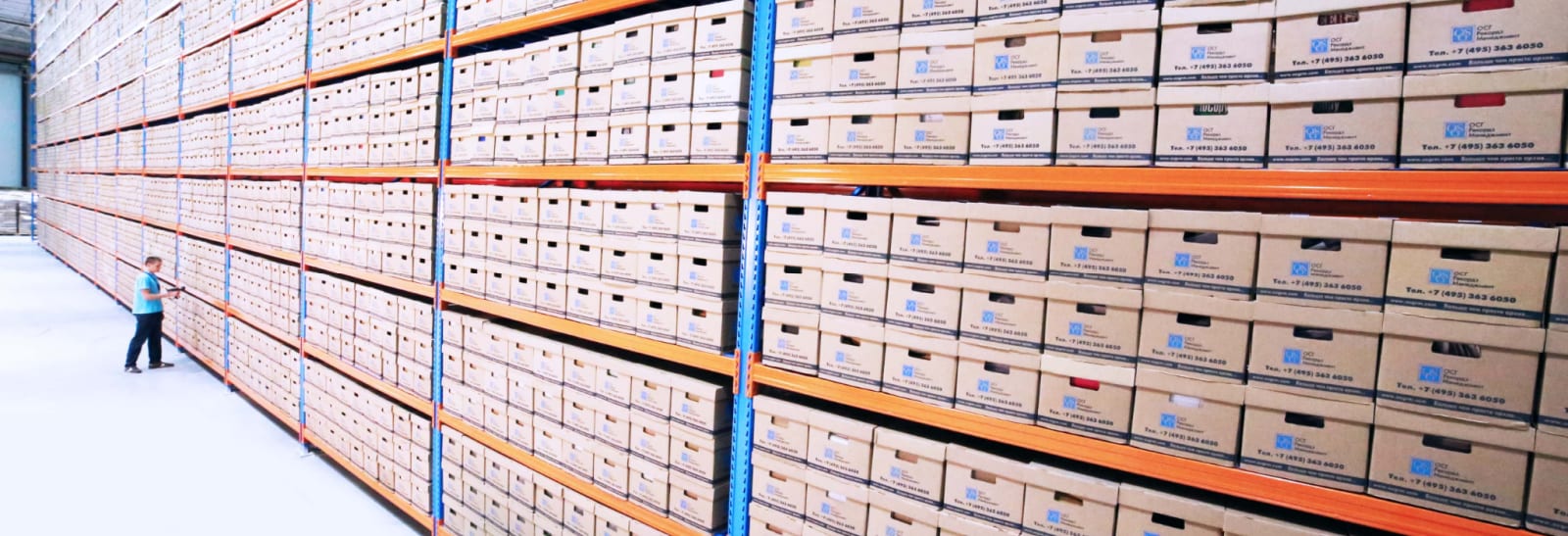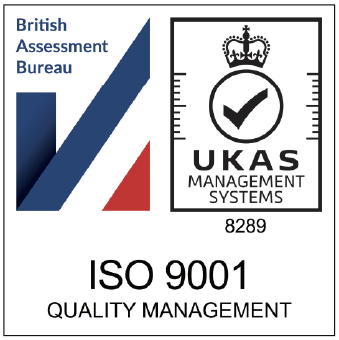In today’s fast-moving eCommerce environment it’s vital to stay on top of your inventory – and by extension your warehouse space – to maintain efficiency and profitability. But there’s something that can hamper that; dead stock. Read on to find out more about dead stock and how to deal with it.
What is dead stock?
Dead stock (often also called dead inventory) refers to any unsold items or products that have been sitting in your warehouse for a long period of time and are unlikely to sell in the future.
Dead stock has never been sold to a customer, so returned items are not classed as dead stock. Instead, we’re referring to brand new items which for lack of demand or expired seasonality (for example, a t-shirt emblazoned with NYE 2020), are gathering dust in your warehouse and costing you money.
That’s right, If you have dead stock, then it’ll be costing you money. Why? Because if you’re unable to recoup the cost of manufacturing or buying an item (by selling it), then that’s wasted capital that you could be spending on other, more profitable, products.
Dead stock also costs you in terms of warehouse space. Dead stock takes up space which could instead be used to house more of your top-selling, fast-moving products.
In addition to being unable to stock more of your best selling items, dead stock also accumulates storage costs over time. These ‘holding costs’ include the cost of leasing your warehouse, utilities, insurance and more. According to a report by Industrial Distribution, some businesses pay more than 30% of an item’s value in holding costs alone.
So, it pays to deal with your dead stock…
What are the causes of dead stock?
Why do many eCommerce businesses end up with dead stock? Answering this question can help you avoid building up dead stock in the first place, so let’s take a look at some of the most common causes for the accumulation of dead stock
Poor sales
It’s an obvious reason for dead stock, but it’s one that’s important to address.
Poor sales can happen for a variety of reasons. For example, your target market might not like the product; because it’s out-of-fashion, it’s too expensive (or cheap), or because a competitor has released a more appealing version of your product.
If you’re suffering from poor sales, then you may need to go back to the drawing board and interrogate your market research. Flawed market research is often the root cause of poor product sales.
Defects
Naturally, no one wants defective products in the first place, but unfortunately they can slip through the net and result in bad word-of-mouth, bad-reviews and more. All of which will hurt sales.
You can tackle the issue of defects by introducing quality checking standards as part of your inventory process. These quality standards could include:
Product specifications
If you’re ordering items from a supplier, you can set out product specifications that stipulate the standards, dimensions and functions of a particular product. By checking new stock against your product specifications, you can quickly and easily detect defects and prevent them becoming dead stock (or being sent to customers).
Packaging requirements
Introduce packaging requirements as these can help keep your products safe and secure and less likely to get damaged. You should set packaging standards with parameters such as quality of material, type of material and colour.
Accepted Quality Limit (AQL)
Another step you can take to reduce the number of defective products that make it into your inventory is to introduce an Accepted Quality Limit or AQL. An AQL sets the maximum number of defective items that you will accept in a single batch of items picked randomly.
Instead of checking the entire batch of your latest products, you take a statistically significant sample – check it for defects – and then accept or reject the entire batch based on your assessment of that sample.
For example, if you have received 100 printed t-shirts from a supplier, for your AQL analysis you should examine 10 of the t-shirts. If you have set your AQL at 3, it means you’ll only accept the entire batch if there are no more than 3 defective items in the sample.
Ordering inconsistencies
Ordering inconsistencies are another leading reason for the accumulation of dead stock.
If you’re ordering too many items at once, or ordering items at the wrong time, then you’ll be increasing the likelihood that you’ll end up with dead stock. If your order process needs some ‘fine-tuning’ then consider incorporating some simple calculations such as Reorder Point, Economic Order Quantity (EOQ) or Inventory Turnover Ratio.
These calculations can help you improve specific areas of your order management process.
Let’s take a look at each one in turn.
Reorder Point
The Reorder Point formula is based on the number of items you have in stock (often referred to as safety stock), calculated against demand during lead time. The formula is usually presented as:
Reorder Point = Demand during lead time + safety stock.
Using this formula you’ll know at which level of stock you should place your next order so that you don’t run out of items or end up with too many in your warehouse. If you’re not too sure what demand during lead time or safety stock means, keep reading.
Demand during lead time
Demand during lead time is the number of days between you placing a purchase order with your supplier and receiving the products. To calculate demand during lead time just multiply the lead time (in days for a product) by the average number of units sold each day:
Lead time demand = lead time x average daily sales.
Safety stock
As well as knowing the average demand for a product, you should also calculate how much safety stock you may need in case of a sudden surge in demand. Think of safety stock as being some extra stock that you hold ‘just in case’. The formula for figuring out safety stock is:
Safety stock level = (max daily orders x max lead time) – (average daily orders x average lead time).
Figuring out your reorder point formula for your key items will go a long way towards tackling ordering inconsistencies and, by extension, dead stock.
Economic Order Quantity
Another way of reducing ordering inconsistencies is with the Economic Order Quantity (EOQ) formula. The EOQ helps you figure out the ideal quantity of products you should order to minimise inventory costs such as holding costs, storage costs etc.
The formula for figuring out your Economic Order Quantity is as follows:
Economic Order Quantity (EOQ) = demand x order cost / holding cost.
Be aware that the calculation of your EOQ will be based on a number of assumptions. An EOQ formula assumes that your demand will remain constant throughout the year (for example, it doesn’t factor in seasonality), it also assumes that your holding and ordering costs remain constant. Finally, the EOQ formula doesn’t take into account any supplier discounts that you may receive.
However, if you are comfortable with those assumptions, EOQ offers another great way of reducing those ordering inconsistencies that can result in dead stock.
 How to deal with dead stock
How to deal with dead stock
So far, we’ve looked at what dead stock is, and the causes of dead stock (along with some ways to tackle those causes), but what if you end up with some dead stock or you already have some?
Don’t worry, the team at 3PL has set out some great ways of dealing with dead stock below.
Clearance sales
Clearance sales are a classic way of dealing with dead stock. And, they’re a classic because they work.
Host a clearance event on your eCommerce store where you list all of your dead stock on your website. Give it a marketing push and make a big point about the discounts and you could soon find eager bargain hunters snapping up your dead stock.
Yes, you may not achieve the profit margin you had originally hoped for when you stocked the products initially, but you’ll free up space in your warehouse for faster-selling items, plus you’ll eliminate any future holding costs associated with the continued storage of your dead stock.
Product bundles
Why not group your dead stock products with other, more popular, products?
Creating product bundles can be a great way of shifting dead stock, whilst also increasing the perceived value of an order.
But, for product bundles to work effectively, you should give them some thought. For example, you’ll want the products in your bundles to be of a similar theme e.g. a dead stock hat goes with a popular t-shirt.
As with clearance sales, product bundles may reduce the profit margin you were hoping to originally achieve for what is now dead stock (the bundled price is usually lower than the total price if the shopper purchased each item separately), but it does have the benefit of freeing up warehouse space and eliminating future holding costs.
Offer a free gift with purchases
Giving away your dead stock for free may sound extreme (and it’s certainly not suitable for every eCommerce store), but it may work for you.
A free gift promotion is a great way of attracting new and repeat customers to your store. It can be a really effective marketing tactic.
Don’t just take our word for it. A study in the Journal of Marketing found that consumers value ‘free’ more than ‘discounted’. In the study customers in a coffee shop were offered either a 33% discount on their coffee, or 33% more coffee for free. You guessed it, the free option won out… (even though the 33% discount was actually a better deal!)
To improve the value of your free gift campaign, you can add a minimum purchase limit, which can help to offset some of the losses associated with giving away your dead stock for free.
You can also offer a free gift as a surprise. Throw in the gift with an order and you’ll delight your customer, creating a positive experience and building brand loyalty.
Return dead stock to your supplier
This is not always feasible, but depending on the product you may be able to reach out to your supplier to see if you can return your dead stock.
When thinking about returning dead stock to your supplier, there are a few important things to take into account:
- Your supplier may not be willing to offer a full refund. Instead, they may only be willing to repurchase the stock at a discounted price (if at all).
- You will probably have to pay a restocking and shipping fee.
- Your supplier may offer you a credit rather than a refund. If they don’t have other products that you think will sell well, then that could be a problem. You don’t want to return a product for a product which will also become dead stock!
Consider forming a partnership
Do you have existing relationships with other retailers, eCommerce stores or brands?
If so, you could consider forming a partnership as a way of shifting dead stock. Co-branded product bundles are becoming more popular.
You could also partner with a brick and mortar store and hold a co-branded ‘garage sale’ where you jointly sell dead stock.
Donate your dead stock
As with some of the other suggestions in this article, this is not necessarily suitable for all eCommerce stores and/or products, but making a donation can be another good way of dealing with dead stock.
Consumers are increasingly concerned about the ethical and environmental impact of their purchases. Many of them want to buy from companies that actively contribute to social, economic and environmental causes.
Donating dead stock could potentially be a great way of boosting your brand’s reputation in the realm of Corporate Social Responsibility (CSR). That’s important because, according to a recent study, more than half of all consumers are willing to pay more to shop at a store that demonstrates good CSR.
Donations can be a particularly good tactic for retailers of apparel or consumables, where clothing and personal hygiene items are easy to donate to charity partners.
Consider wholesale, closeout and liquidation options
If you don’t want the hassle of shifting dead stock yourself, you could approach a wholesale, closeout or liquidation specialist.
Companies such as closeout specialists will buy your product in bulk and resell in their own shops at a discount price. If you have a lot of apparel and home goods that you are looking to move, then consignment/second-hand shops are a good option. They sometimes also buy in bulk and may be willing to take your dead stock off your hands (for a discounted price).
Could your dead stock be a hidden gem?
Before you start getting rid of your dead stock, it can pay to check the availability of the products you’re looking to move. If you find you are sitting on a pile of products that are no longer widely available, then you could in fact be sitting on a goldmine.
Popular dead stock items tend to be things like trainers or vintage apparel. People are willing to pay huge sums of money for things like editions of Nike Jordans which have long gone out of production.
Before you get rid of your dead stock, make sure it’s not highly sought after first!
We hope you’ve found our guide to dead stock useful. If you want to tackle dead stock in your eCommerce store and prevent it happening in future, talk to a quality third party fulfilment provider. Talk to 3PL.
Want to know more about how to deal with dead stock? Contact 3PL today for some friendly, expert advice.
Read more advice for your eCommerce store on the 3PL blog…
Inventory Turnover Ratio: What Is It & How to Calculate It | Do I Need a Specialist Fulfilment Centre for My Product? | What Is Kitting and Assembly?
Speak to 3PL about your order fulfiment
It’s time to supercharge your business and overtake your competitors. Speak to 3PL today and find out how we can take your ecommerce and B2B fulfilment to the next level.


